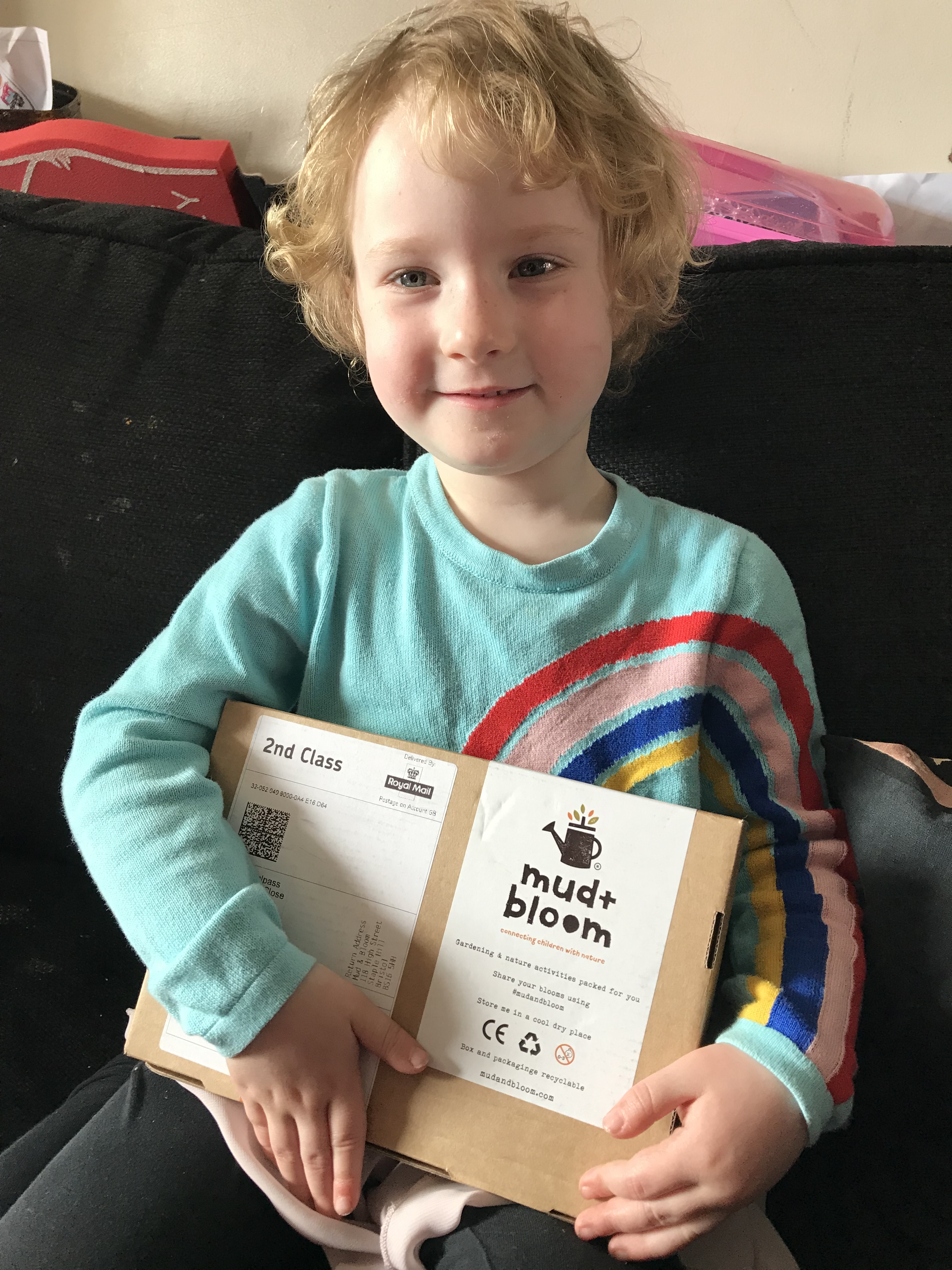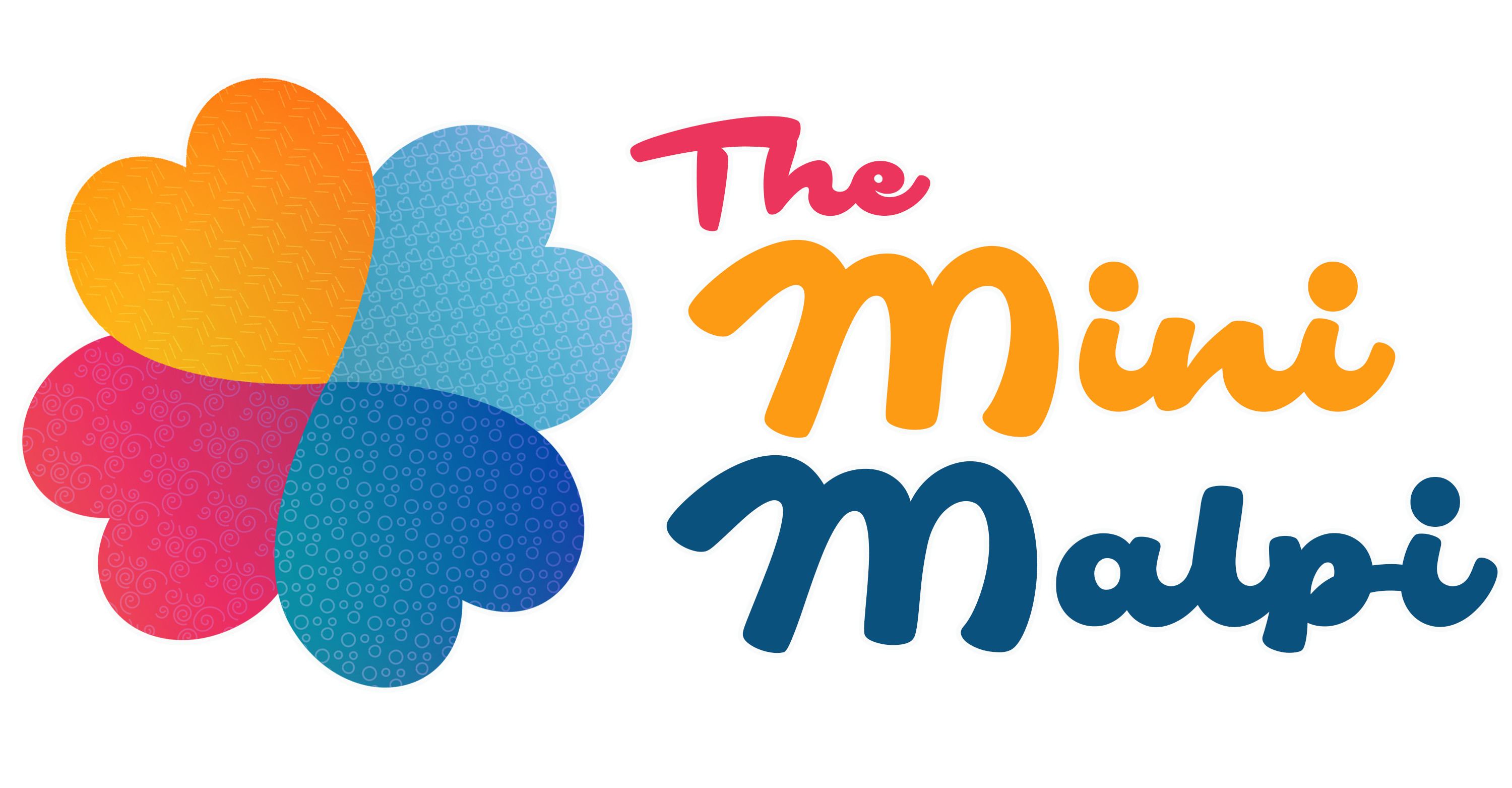 “Inspiring children to connect with nature” is the strapline adopted by children’s activity subscription box company Mud + Bloom. It’s definitely an aim we can get behind and the minis were really pleased to be given an April box for review.
“Inspiring children to connect with nature” is the strapline adopted by children’s activity subscription box company Mud + Bloom. It’s definitely an aim we can get behind and the minis were really pleased to be given an April box for review.
As well as educational and fun, Mud + Bloom’s website promises that its monthly gardening and craft activities aimed at ages 3 to 8 will be easy – “The boxes will be delivered to your door with all the seeds and materials needed for the gardening activity – there’s no need for you to have a garden or tools” – but I still worried that I would find some of it difficult to carry out with the minis.
So, when one of the first activity cards I read was “Watch a… Puddle disappear”, I was quite relieved. Helping children to “see how water turns to vapour and disappears when the rain stops and the sun comes out” and accompanied by a water cycle diagram, the chalks required to draw round the edge of a puddle were included in the box. It’s a perfect example of one of Mud + Bloom’s tasks – yes easy, educationally effective for both visual and physical learners and with a resource (the chalk) that could be used multiple times for the same task or also in other ways. I had pictured us going on to make various patterns or drawings whilst waiting for our puddle to shrink but, despite being the month famed for showers and the simplest of the activities, it’s the one that we haven’t yet had the chance to carry out.
The card daddy and Luke started out with was “Grow your own… Wheatgrass”, four compost pellets and a packet of wheatgrass seeds were provided, you just needed to find a small plate to spread and sprinkle them on – “All seeds are certified organic and biodynamic. We also provide organic peat free compost pellets in each box, to enable our subscribers to get planting immediately.”
Next I tackled the craft project “Make your own… Water cycle bracelet” with Luke and Willow. I loved the idea of this – Luke learns best with physical action, threading is a great fine motor activity, I think the water cycle is a particularly compelling subject due to its various very different states and Willow is always interested in anything involving jewellery – and with Step 7 being “make another bracelet for a friend” there was enough beads and thread provided to one bracelet each (we were gifted a single box but sibling boxes are also available). The task did seem to very much do the trick with both Luke and Willow recalling what step in the water cycle each colour bead represented as both were firstly threaded and then played with when on their wrists. The beads supplied for this however were far too small for my minis’ little fingers – Willow did persevere and manage the first bead but then I had to help with all the rest.
As well as showers, April brought us Easter this year and the next card we picked was “Make you own… Batik eggs”. The idea of this immediately appealed to me again as it reminded me of a previous cyanotype printing activity we enjoyed. We started by heading into the garden to collect some small leaves, flowers and grasses before wrapping them around some eggs in the muslin cloth provided and then boiling them in a pan with onion skins in. It obviously sparked Luke’s creative imagination too as he was very quickly coming up with different ideas of what materials we could use to try for different effects. Whilst we tried getting him to concentrate on following the steps as written for our first go he’d be glad to know that Step 9 is “You can reuse the muslin cloth, should you want to make more!” Even Faith liked this activity as she got to enjoy the culinary results of this one after we’d finished admiring the aesthetic ones.
A few days later and it was time to scatter the organic Nantaise 2 Milan carrots seeds provided in the box. We are fortunate to have a garden but they could also have been planted in a deep grow bag, container or pot. Hopefully in a couple of months we shall have some “sweet and crunchy” orange veggies to enjoy at dinner!
As well as seasonal gardening and crafts the box also include nature news, a quiz and a spotter sheet, all of which have been created by qualified teachers and support the national curriculum with influence from Forest School, Steiner and Montessori education.
For the first time since they’ve been publishing their boxes there was an accidental omission on one of the cards but the benefit of it being a subscription service meant that they were able to contact all their readers to correct it.
Sign up now and your May box will include pressed flower bookmarks, poppies, bark and leaf rubbings, sweetcorn and bee spotting. If they sell out of May boxes before you have time to click then you’ll start with June’s instead – perfect if you’re planning on joining in with the Wildlife Trust’s 30 Days Wild.
You can subscribe from month to month at £9.95 per single box (£12.95 for a sibling box) or commit to six month or 12 months at discounted rates. Gift subscriptions are also available.
Find out more at www.mudandbloom.com
*We received the April single box for free in order to review the subscription service.

Recent Comments